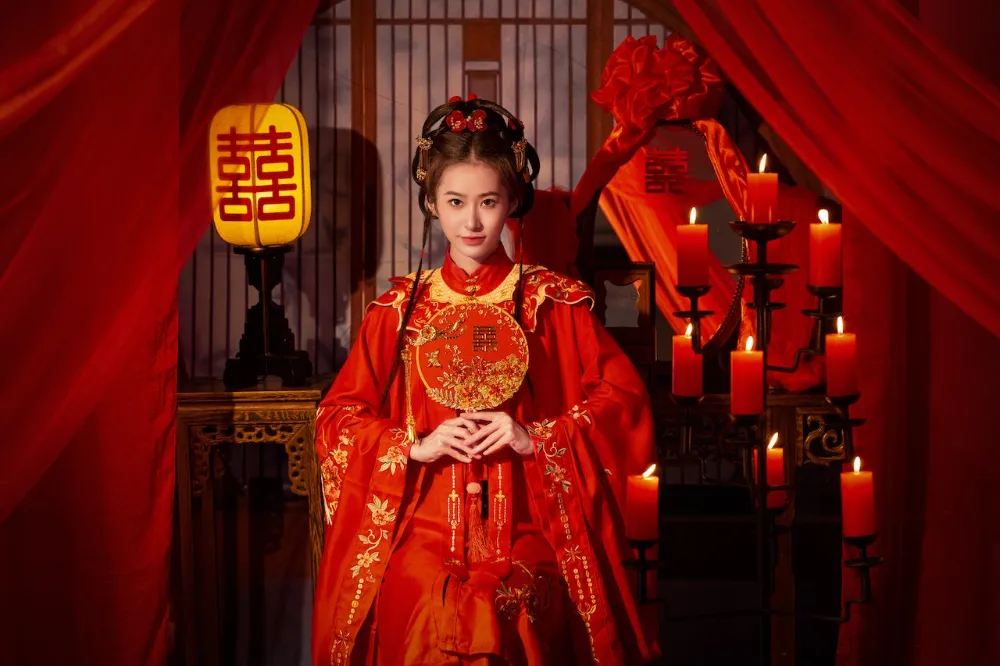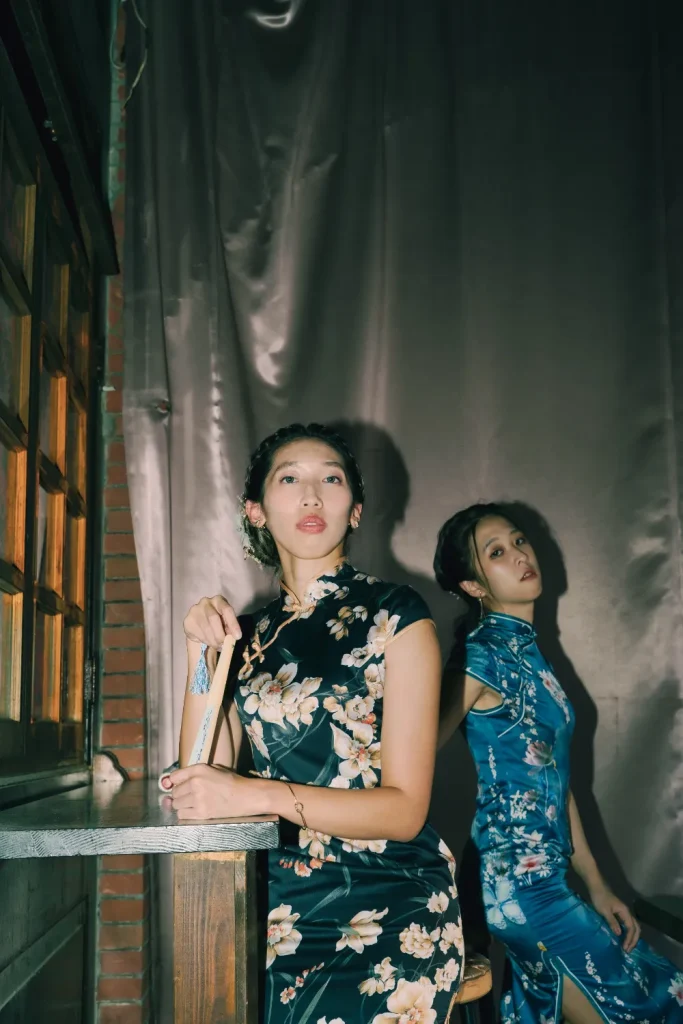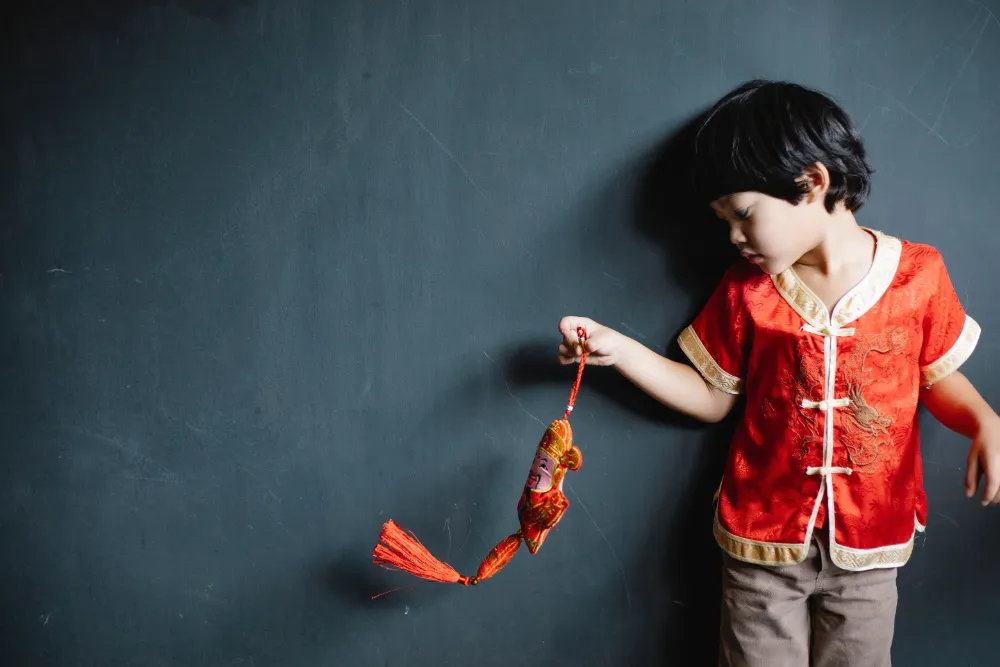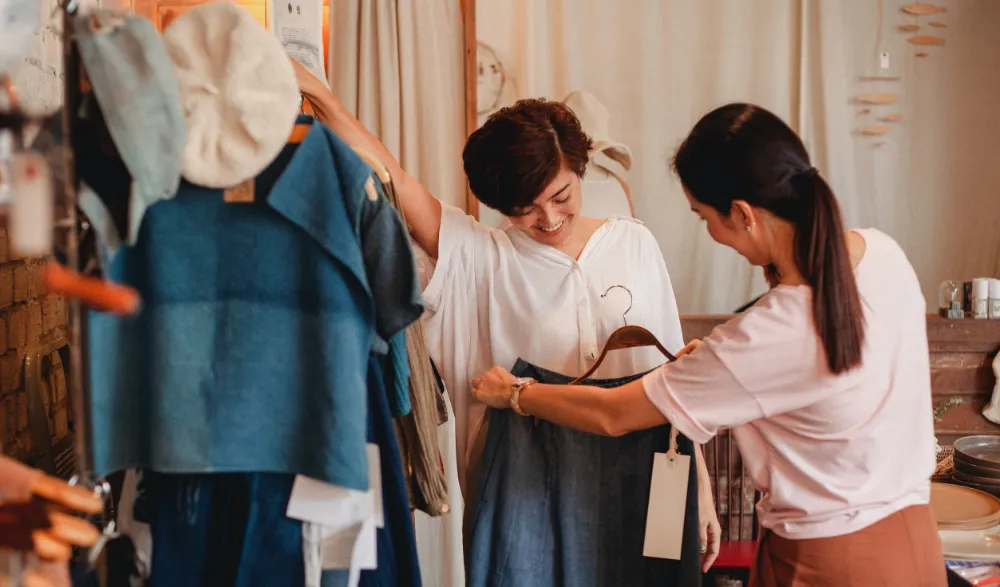- Chinese clothing has a very big significance from Ancient China to Modern Day
- The hanfu is part of traditional clothing worn by both men and women. It can come as both a two-piece and one-piece.
- The tang suit, often worn in the Tang Dynasty, was silky and exuded elegance.
- Modern Chinese clothing is heavily influenced by Western fashion standards.
Traditional Chinese clothing is characteristic of Chinese culture. In ancient China, clothing was used to show off one’s wealth, and only the rich wore materials made of the finest fibers.
There were also other ways in which traditional clothes separated people by social class. For example, in the Song Dynasty, the common people weren’t allowed to wear purple as it was the color of the imperial official dress.
Traditional Chinese clothing items are still relevant today, and many wear them as a badge of honor and tribute to their rich cultural significance.
Below, we travel through time all the way back to Chinese clothing in prehistoric times – keep reading to learn more.
What Is Considered Traditional Chinese Clothing?
What exactly is meant by traditional Chinese clothing? This type of clothing encompasses both contemporary iterations of native Chinese apparel as well as ethnic minority clothing like the hanfu – a Chinese traditional dress. The hanfu can either be a one-piece or two-piece outfit made of silk and secured with a thick belt.
Traditional Chinese clothes are made of three materials: linen, wool and silk, with silk signifying a highest social status.
Basic Forms of Traditional Chinese Clothes
Traditional Chinese clothing, especially the dress, is a reflection of Chinese cultural traditions. Through contemporary mixes of Chinese clothes, traditional Chinese clothing represents one of the key cultural aspects of Chinese civilization.
There are two primary forms – two-pieces and one-pieces:
Two-Piece Clothing
The iconic two-piece traditional Chinese outfit is made up of two parts: the upper garment, yi and, the lower garment, or chang. The upper garment is usually cross-collar, while the bottom is a skirt with a belt hanging on the side.
A great example of two-piece traditional Chinese clothing is the hanfu.
One-Piece Clothing
One-piece traditional Chinese clothing comes in the form of a dress, such as the highly commercialized qipao, also known as cheongsam. One-piece outfits are usually worn by the women, and they are tight-fitted to show off the female form.
Well-Known Traditional Chinese Clothes Types
Typically, traditional Chinese clothing was defined by a wide cut and a straight shape. Depending on the occasion, different colors, designs, and additional ornamentation were highlighted.
The four most characteristic styles of traditional Chinese clothing are the hanfu, cheongsam (qipao), tang suit and zhongshan suit:
Hanfu
The traditional Chinese dress, known as hanfu, is one signature piece of traditional Chinese clothing. Many people feel that their strong sense of national identity is strengthened by wearing a hanfu.
Qipao (Cheongsam)
Qipao (cheongsam) is a Chinese dress made according to the ethnic clothing of the Manchu people. The cheongsam has changed over time to match modern life.
Tang Suit
The Chinese costume, known as the tang costume, is a style of jacket. They are primarily worn by men and date back to the Qing Dynasty.
Zhongshan Suit
Zhongshan is a name for a type of men’s suit in China. This powerful male fashion in China is modeled after Sun Yat-sen (Sun Zhongshan), the founder of the republic. It is designed like a contemporary Chinese tunic as part of traditional Chinese clothing. The four pockets on the Chinese Zhongshan suit stand for propriety, justice, honesty and shame.
Ancient Chinese Clothing
Making fabric was a woman’s job in ancient China. In addition to silk and hemp, various fibers were used to supplement the principal materials. Silk and hemp were the two primary materials for ancient clothing.
In ancient China, a person’s dress revealed their position in a hierarchical society. The fabric color and pattern were all crucial components of Chinese traditional clothing, and each had a symbolic value.
Ancient Chinese clothing for men involved tunics over their pants, while women wore long tunics layered one on top of the other.
Prehistoric Times
China’s steep mountains, the surrounding desert, and the multiple seas created natural barriers that shielded the ancient Chinese culture and people from outside invaders. Before the development of trade channels, Chinese culture was influenced by natural obstacles in ancient China.
Poor peоple in prehistoric times in China produced their own Traditional Chinese clothing out of hemp or ramie. Wealthy individuals wore the Chinese shirt. They covered themselves in layers of garments, including silk.
Xia, Shang, and Zhou Dynasties
Both Confucianism and Taoism were originally philosophical systems with similar views on society and the human condition. Even though they initially held similar ideas, they later developed profoundly divergent religious views, which had a major impact on Chinese traditional clothing and society.
The Song Dynasty saw a significant influence from Confucianism. Compared to Tang styles, Chinese traditional dress for both men and women was more modest. Actually, modesty was a crucial component of Confucianism.
Both ideas had an impact on Ancient Chinese culture, especially in terms of reverence for traditional Chinese clothing and certain beliefs.
Han Dynasty
The hanfu was popular throughout the Han Dynasty. Hanfu incorporates three different styles: shanku (upper body attire with short pants), aokun (upper body attire with a long skirt) and rukun (upper body attire with a long skirt).
After the Han Dynasty, hanfu evolved into a number of different fashions using materials made using a range of intricate textile production methods, particularly those used to make silk. Originally, silk was utilized for ceremonial and decorative purposes.
The growth of weaving was sparked by the production of silk.
The Han Dynasty, one of the greatest in Chinese history, had a significant impact on China’s history and traditional clothing
Medieval Chinese Clothing
In Medieval China, most people wore tunics as part of traditional Chinese clothing. Men wore shorter tunics that reached their knees, while women wore long ones that reached their feet. Over their tunics, they would occasionally wear coats.
The surface of the fabric, rather than the contour of the human body, was the focus of medieval Chinese clothing. In ancient China, a person’s rank in a hierarchical society was largely based on the Chinese traditional clothing they wore.
Tang Dynasty
Silk was significant during the Tang Dynasty, and its color represented the person’s social standing in the community. Only the noble class was allowed to wear silk during the Tang Dynasty.
Here we can mention the tang suit, which gave an elegant and unique look. The quality of the material was silky with shiny embellishments.
Song Dynasty
The Song Dynasty was a successful dynasty that ruled the nation through one of its most illustrious periods of Traditional Chinese clothing.
Neo-Confucianism advocated the use of the primary (basic) hues of blue, yellow, red, white and black. The use of purple was not common. Women wore red clothing, and the emphasis was on simplicity.
Ming Dynasty
The Ming Dynasty experienced significant maritime commerce influence. In actuality, thick wool made up the majority of naval apparel. Clothing was often in dark colors, and tar was frequently used to defend against the cold. Officials wore traditional Chinese clothes made of silk during the Ming Dynasty, whereas commoners wore coarse clothes in just black.
Women wore a long Chinese dress with long sleeves, while men wore loose robes. Pleated Chinese skirts were especially popular for women.
Qing Dynasty
In the Qing Dynasty, traditional clothing was based on a tight Chinese shirt and sleeves. The collar was saddle-shaped and large enough to cover the man’s cheeks.
Greater mobility was made possible by the Manchu people’s traditional Chinese attire. The Han people’s robes, which were wide and long, limited their movement. Officials from the Qing era also wore royal costumes, variations of Manchu clothing for the royal family.
In the Qing dynasty, the color of the robe revealed the status of the individual in society.
Traditional Clothing of Other Ethnic Minorities
A number of dynasties have ruled China over its long history, each with a distinct significance and lasting legacy. Each ethnic minority had its own style of Chinese clothing, which was a significant aspect of Chinese culture:
Dai Ethnic Minority
Women of this Chinese ethnic minority typically wore sarongs and tight shirts as part of their traditional clothing. Sarongs resembled the traditional silk skirt of Thailand.
In Dai, men wore loose-fitting slacks with collarless coats.
Tibetan Ethnic Minority
Many Tibetans wore genuine sheepskin fur coats due to the unfavorable weather.
They’d remove layers of Chinese clothing and knot them around their waists as the weather would change during the day. At this time, only long robes made of wool or sheepskin were worn by men and women. Women only wore robes composed of silver and coral during celebrations.
Uyghur Ethnic Minority
The Uyghur people have cultural ties to Pakistan, Kazakhstan and Afghanistan, which are their neighbors.
As a result of their close ties to Islamic culture, Uyghur clothing was primarily made of silk.
Long Chinese dresses with silk embroidery and a lot of jewelry were a staple for women. The two most widely used colors were red and black.
In the colder months, men wore woolen jackets; otherwise, they typically wore long caftans with scarves knotted around their waists.
Zhuang Ethnic Minority
The predominant colors in this ethnic minority’s traditional clothes were brown, black, and blue.
Women wore wide pants, a black turban on their heads and an apron around their waists in addition to a black or blue collarless jacket. The men wore loose-fitting black tang suits with ties around their waists.
Modern Chinese Clothing
Modern Chinese clothing has been heavily influenced by Western standards and communism.
In the 20th century, Chinese ladies started to update their attire. As a result, they started fusing Eastern and Western aesthetics. Shorter-length Chinese dresses, coats and pants were popular.
The majority of the population’s baggy Chinese clothing became a memorable icon of Communist China. Chinese women’s clothing, handbags and high-heeled shoes were first worn in this communist-era style.
Conclusion
It is not difficult to discern the national character, wealth, diversity, practicality and regional peculiarities of traditional Chinese clothing. These traditional clothes are an outcome of historical evolution.
Today, the majority of Chinese people dress in contemporary fashion. Only during specific festivals, rituals, or religious events are traditional clothes worn. However, they are frequently shown in Chinese movies.




